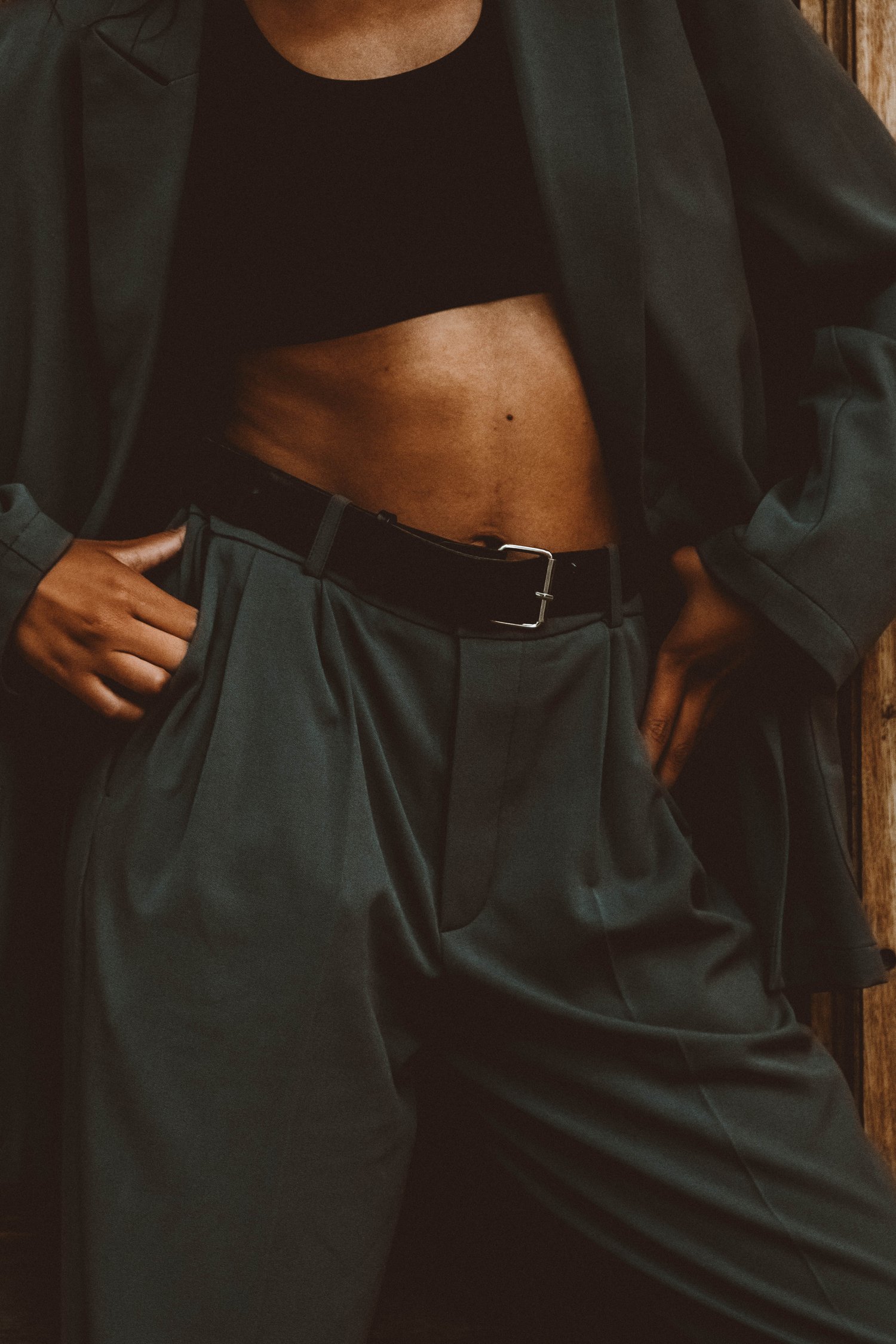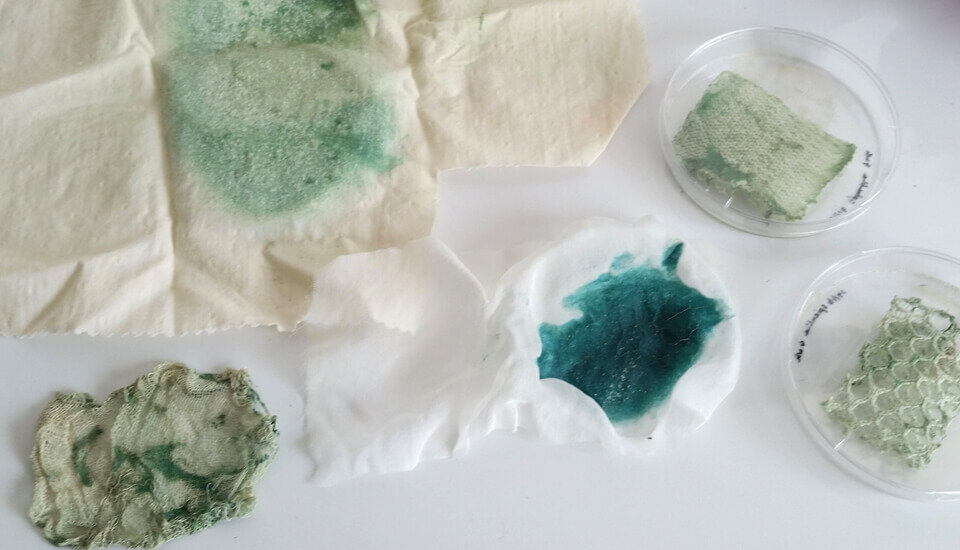Why conscious style rather than sustainable style?
Over the past decade the sustainable fashion movement has come into the spotlight. While it started out as a small community of green or eco-conscious fashion, today you’d be hard-pressed to find a fashion brand that doesn’t have sustainability on its radar.
While that might seem like a positive thing for those of us who value sustainability — it’s not so straightforward.
Unfortunately, a lot of brands are using the uptick in sustainability as a mere marketing ploy to reach younger demographics who are more environmentally and socially conscious.
The truth is that nothing is 100% sustainable. Everything in the fashion industry makes an impact of some sort or another. That can seem like a really daunting thing at first and can make you feel stuck, it doesn’t have to be that way. That’s where conscious style comes in.
Conscious style uses fashion as a vehicle for good in the sustainable fashion movement. Conscious fashion simply means that you are intentional about what you purchase, who you purchase from, and understand the larger impact that it has.
There’s no one-size-fits-all when it comes to conscious style — it’s all about aligning how you shop with your personal values.
The great news is that it doesn’t mean that you can’t have fun with fashion— actually many times adopting conscious style habits can take your personal style to the next level.
There are so many ways you can adopt conscious style habits into your life, and when you start to care where things come from and start building a relationship with what you wear, you will naturally purchase things that you truly love rather than what trends are being pushed.
While conscious fashion doesn’t have to mean to stop buying fashion (unless you’ve decided you have enough clothes — then all the power to you) but it also doesn’t give an all-access pass to shop till you drop. Buying less is always the best option, even if you’re shopping secondhand.
Why is conscious style important?
I’m sure if you’re reading this right now I don’t need to tell you that the fashion industry is one of the most environmentally invasive industries in the world.
It creates 10% of humanity’s carbon emission annually, as well as uses up 98 million tons of resources – including oil to produce synthetic fibers, fertilizers to grow cotton and other fibers, and an endless list of chemicals needed to dye and finish fabric.
However, it’s important to understand how it came to this — because it wasn’t always this way.
When fast fashion came onto the scene in the early 2000s things changed dramatically for the fashion industry.
Thanks mostly to offshoring (manufacturing in countries with lower labor wages) the price of clothing was dropping and people were and have continued to buy more. The world now consumes about 80 billion new pieces of clothing every year. This is 400% more than the amount we used to consume in the 1990s.
When brands like H&M and Zara came to the masses, they were praised for their ability to get clothing from sketches into the stores in less than 2 weeks. With around 24 new lines dropping each year, a vast difference compared to the traditional 2-4 that the luxury fashion industry releases each year.
Today Shein, the fastest growing fashion retailer has pushed it even further, deemed the “real-time” retailer. On average Shein sells tops for $7, dresses for $12, and jeans for $17, and refreshes their collections on a weekly basis.
While this has opened the accessibility of fashion to a wider market, it came with some costs:
The Decreased Value of a Garment
With prices low, and the number of garments in production rising, we stopped valuing our clothes. We’ve started to see clothing as disposable and who can blame us when a t-shirt is priced the same as a coffee? While we shop more, we wear our clothing less. Today on average people wear a garment just 7 times before disposing of it.
The Cost of Synthetic Materials
However, one of the biggest problems is that most of our clothes are made out of synthetic materials that are derived from nonrenewable materials (oil) which are not biodegradable. This means that when we toss a shirt, dress, or skirt that’s made out of nylon or PU, it ends up in a landfill and will stay there for longer than you or I are alive.
The Cost of Natural Materials
Even clothing made with natural fibers has hidden costs. Cotton is one of the most water and pesticide-intensive crops to grow, It takes roughly 2,700 liters of water to produce a single cotton T-shirt. Not to mention that it’s grown in an industrial mono-crop style that is known to ruin the nutrients in the soil and decrease biodiversity. While cotton and other natural materials do biodegrades at the end of their life, they can cause a lot of harm during the cultivation and production processes
The Cost of Off-Shoring
The fashion industry has a very complicated supply chain that involves a lot of outsourcing, which makes it almost impossible to know exactly what goes into our clothes or who’s making them.
For example, a brand might contract a factory in India to make their collection, but the factory can hire out another factory to actually make the collection. While the factory that was originally hired might follow labor laws and have certifications, the smaller factory they subcontract might not— and there’s no real way for the brand to tell.
It’s the same with materials, you might go to a factory in Italy to get your textiles, but the yarns and fibers could be coming from anywhere in the world.
It’s virtually impossible to know where our clothes are coming from at the moment. (some brands are starting to experiment with blockchain, but it’s still at the beginning stages, with a ways to go for mass adoption)
This makes it extremely difficult to accurately trace the impact that clothing production has — and even harder to create change within the system.
The Social Cost
The fashion industry has been exploiting the inequality of the global labor market and relaxed laws within developing economies. Garment workers are among the lowest paid in the world, some earning only a few dollars a day, the European Parliament uses the term “slave labor” to describe the current working conditions of garment workers in Asia.
They are not only paid poorly but subject to hazardous working conditions, exposed to many toxins and ingesting microfibers, as well as structural hazards that result in tragedies like when the garment factory at Rana Plaza collapsed in 2013, killing 1,129 workers. Oftentimes they are also subject to forced long hours, harassment, and sexual assault, with new cases being brought to the public attention almost weekly.
The Time is Now for Conscious Consumption
Overall it’s estimated that if the fashion industry keeps its pace of growth, and consumption continues at its current rate, we’ll need three times as many natural resources by 2050 compared to what we used in 2000. While it’s complicated for brands to make quick changes, we as consumers can make a large impact by aligning our values with what and how we spend.
Liking the Content?
Why not sign up for the weekly roundup
Expressions of Conscious Style
While there’s no right and wrong way to go about conscious style there are some categories within the sustainable fashion universe that fall under conscious style.
You don’t need to pick one, it can be a mix and match of what suits your lifestyle and your values. Remember, whichever way you express your conscious style the number one best thing you can do is buy less and wear what you have for longer.
1. Slow Fashion
The antithesis too fast fashion, slow fashion focuses on championing garments that are made “slowly” as in not mass-produced. This can mean shopping with local artisans or brands that do slow made-to-order batches. It values quality over quantity, and traditional tailoring and artisanal techniques.
2. Ethical Fashion (Fair Trade)
Ethical fashion is a term that describes fashion designed from an ethical standpoint. This includes production, retail, and purchasing. It covers a spectrum of topics that focus predominately on garment workers, such as working conditions, exploitation, fair trade, and sustainable production. It also can cover ethical environmental topics such as where and how we are sourcing materials, as well as animal welfare.
3. Ecofriendly Fashion
This focuses on the environmental aspects that the fashion industry affects. This can be anything from water usage, to biodiversity. This can mean buying from brands that specifically use eco-friendly materials, or it can be from brands that minimize their impacts by doing things organically or without presides or dyes.
4. Vegan/Cruelty-Free
Pretty spot on to the name, cruelty-free or vegan fashion means that there are no animals harmed or used in the making of the materials that are used to make the garments. This covers leathers, furs, and makes sure that in materials like wool which comes from the fur of a sheep, they are treated ethically and without any harm.
5. Resale/Vintage
Pretty self-explanatory, resale, and vintage fashion is buying clothing that has been previously owned by someone else. Vintage refers to older clothing, technically speaking it should be at least 40 years old, but is often used for clothing that is just a couple of decades old. Resale includes any and all garments that have been previously used.
6. Circular Fashion
This is a newer concept in the fashion world, so many people are wondering what circular fashion is. Anna Brismar coined the idea of circular fashion, In 2017 Brismar defined circular fashion as “clothes, shoes or accessories that are designed, sourced, produced and provided with the intention to be used and circulate responsibly and effectively in society for as long as possible in their most valuable form, and hereafter return safely to the biosphere when no longer of human use.”
This means that the fashion garments and accessories are created with longevity at the forefront, so rather than the linear production of making, selling, using, disposing it is making, selling, using, revamping selling, and so forth.
7. Upcycled
Similar to resale and vintage, except that the garment has some sort of value-added. This can mean taking an outdated style and transforming it to fit the style tastes of today or it can be transforming an object into something completely new.
Practical Steps to Adapting Conscious Style into Your Life
The first thing to remember is that you don’t need to worry about being perfect — because it’s impossible. Rather when you approach your style from a conscious standpoint you can choose the aspects of sustainable fashion that align with your values, and make your purchases accordingly.
This post contains affiliate links, which means at no additional cost to you I will receive a percentage if you purchase. Affiliate links allow me to earn revenue so I can continue to share free information on conscious living, I really appreciate your continued support.
Research
When it comes to conscious style: knowledge is power. If you don’t know better, you can’t do better. The good news here is that you’ve already started your research by reading this article— however, this is just the tip of the iceberg. There is an enormous amount of information around the fashion industry and conscious style. Here’s a list of books and videos to get you going on your research:
Movies:
This is a must-see documentary about the true cost of the fashion industry’s exponential growth. Rent it for less than $2.
A documentary about the harmful environmental impact that the fashion industry has— specifically how our beloved blue jeans are poisoning our waterways. Rent for less than $4.
This video unravels the hidden downfalls of the rise of fast fashion. If you’re looking to quit fast fashion, this is a great video to start with. Watch it for free if you have amazon prime, or rent it for under $2.
Books:
There are SO many amazing books available that will help you become more fashion conscious. I won’t go into too much detail about each book, but all of these books are tried and tested by me. If you’re interested in a full book review of one in particular let me know by leaving a comment.
If you’re going to get any of these books, I would have to rank this one the highest. Aja Barber hits every topic on the head, giving an easy-to-read understanding of the deeper-rooted issues that are causing the issues that we face today.
Define your values
Once you’ve got a basic understanding of the fashion industry’s issues, you will start to feel drawn to certain concepts. Maybe it’s the idea of creating as little waste as possible or maybe you want to buy from brands that are fair trade. Whatever it is, outline what values are the most important to you, and what’s non-negotiable. For me, I try to buy 90% of my clothing second-hand or vintage, because I feel like keeping the garments that are already made in circulation longer is a way that I can help make less impact.
Ask Questions
When we start to ask questions before we buy something, we can bring awareness to what we are purchasing rather than falling into the trap of doing things on impulse. Changing your lifestyle into becoming a conscious consumer is as much about habit breaking as it is about learning about our impact. Asking questions will give you more perspective on why and what you are buying.
Some questions you should ask before buying are:
Why are you shopping, is it fulfilling a need or are you just bored?
Where was this garment made?
What type of fabric is it?
How many times will you wear this?
Is it recyclable or will it sit in a landfill for hundreds of years?
Are you buying this because you like it or because it’s trendy?
Are you buying this because it’s on sale?
What can you do with it when you’re done with it?
Buy Less, Buy Better
As I’ve stressed before the best way to start becoming a conscious consumer is to simply buy less and wear it for longer. When you buy less but you buy better quality garments, you will naturally want to take care of your garments and keep them for longer.
The 2 day Rule
Before buying something new, give yourself 2 days to decipher if you actually want it or it was simply a momentary desire. Going off of the last suggestion of buy less but better, when you are buying less overall you want to make sure that what you have in your wardrobe you absolutely love, so giving yourself two days will make sure you are certain that this is a garment that you want to invest in.
The 4 outfit Rule
Another rule that helps cultivate conscious style is the 4 outfit rule. This rule means that whatever you buy should be able to be used in 4 different outfits using things you already own. This helps eliminate the domino effect that often happens when you buy something, and then you need to buy more to complete the outfit.
Cost Per Wear Rule
This rule helps you understand that while buying better quality clothing can seem more expensive at the initial purchase, most of the time over the lifespan of the garment it actually comes out to be less expensive than fast fashion.
for example, if you buy a dress that is $100 but you plan to wear it 20 times, you’re looking at a cost of $5 per wear (100/20), whereas if you buy a dress from Zara for $40 and wear it only twice it’s $20 per wear.
Overall remember to be kind to yourself while you’re on the journey of becoming a conscious consumer. Our world is built around getting us to buy, so just take it slow and bring awareness and intention into your style consumption.











